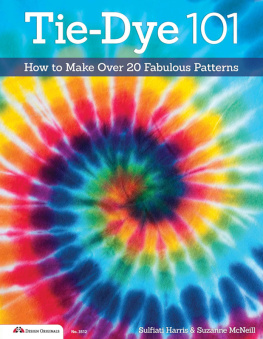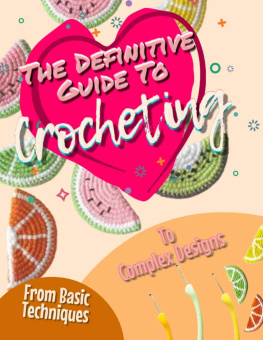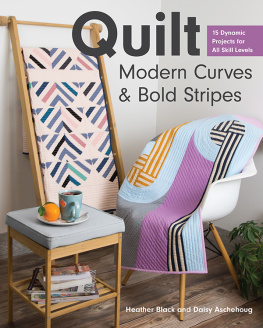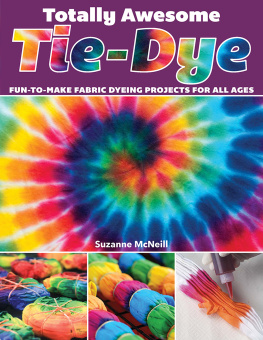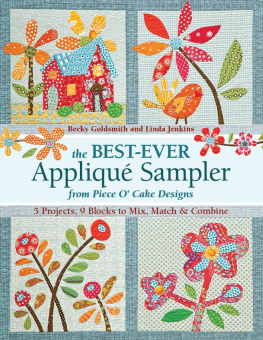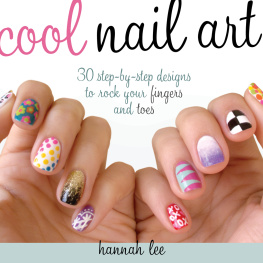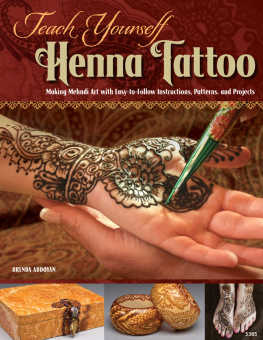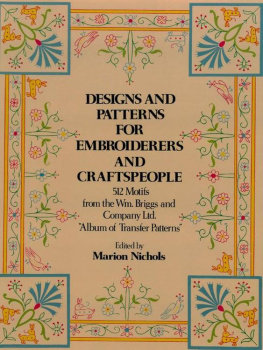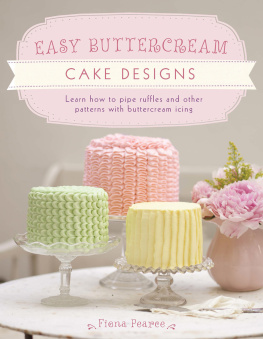Contents


Tie-dye is an exciting craft that is completely versatile. You can get all kinds of effects depending on how you manipulate the fabric and the range of colors that you use. Every creation is unique and it is always exciting to unwrap your project, rinse it out and see what you find. Tie-dye is an adventure every time.
Soda Ash Fixative Formula:
1 cup Soda Ash
1 gallon warm water
Thoroughly dissolved
Dye Formula:
8 oz (1 cup) tepid water (~105)
2 - 8 tsp dye* - *see Dye label
Colors with no *=2 tsp
Colors with *=4 tsp
Colors with **=8 tsp)
1 Tbsp Urea (dissolve in a little hot water first)
Optional:
1/4 tsp water softener if needed
Sodium Alginate thickener (a little to slow spreading and control color, if desired)
For blacks, use up to 4 times as much dye (1 tsp/oz water) and a Tbsp of SALT and dont forget the Urea!
Use a dust mask when mixing all powders.
Multiply this recipe like a cookie recipe to make as much dye as you need. It takes about 4 oz of liquid dye to dye one wet adult T-shirt. 3 - 2 oz jars of dye with no * on the color is enough to dye about 4050 adult T-shirts.
Tie-Dye
by Sulfiati Harris and Suzanne McNeill
Tools & Supplies
Dyes Soda ash Urea Synthrapol detergent Rubber Bands Dust Mask Plastic wrap Paper towels Squeeze bottles Salt (optional) Garments or fabrics (natural fiber) Plastic apron Scissors Plastic to cover work surface Latex or rubber gloves Plastic buckets or tubs for fixer solution and rinsing
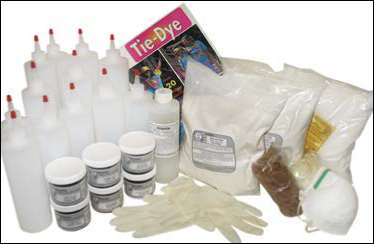
Dyes - The dyes used in this book are Fiber-Reactive cold water dyes that yield brilliant colors with excellent resistance to fading. These dyes chemically react with garment fibers. The garment will need no special care and the color will not fade even if washed with hot water and strong detergent. Avoid bleach and bleach detergents. Dyes must be used with fixer which is the Soda Ash. The simplest way to start is with a tie-dye kit which includes dyes, necessary chemicals, applicator bottles, gloves, rubber bands and a dust mask. Dharma Trading Company has kits that dye anywhere from 6 to 100 shirts ready made. For larger parties, you can use the 100 shirt kit as a guide on how much to order.
Fabric or Garments - Fiber-reactive dyes work best on cotton, rayon or hemp. They also work on silk but the colors will shift or sometimes be lighter. Blends of half cotton and half polyester dye lighter with a heathered effect, because polyester fibers do not take dye. New cotton sheets do not dye well because of permanent press or starch, but used 100% cotton sheets, jersey cotton sheets and cotton flour sack towels dye well. As a rule of thumb, when you buy cotton yardage, make sure that it wrinkles when you crush it. If it does not wrinkle much, it may contain some other fiber or be treated even though it is marked 100% cotton. If you are dyeing a big fabric project, it is a good idea to dye a smaller piece first and see how well it takes dye. Dharma has clothing and fabrics that are guaranteed to dye.
Fixer & Urea - Soda Ash Fixer is a mildly alkaline white powder that is dissolved in water to make a fixative solution for the dyes. Urea is the small white balls used to help dissolve the dye and also keep the fabric wet longer during curing to yield brighter colors. Common plain salt can help yield darker blacks, etc.
Items to Bind Fabric - Rubber bands are used to bind fabric. Size 24 is a good all purpose size. Use smaller rubber bands like size 16 to bind very small circles.
Synthetic Sinew is also used. To make very regular circles, bind fabric around dried beans or marbles. Designs can also be bound with chopsticks or sewn with thread. Shibori designs can be bound around a 24 length of 2 to 4 diameter PVC pipe.
Items to Mark Fabric - For some designs, guideline marks need to be made on fabric. Use a pencil, piece of chalk or a special marker which makes lines that later wash out. Paper, scissors and a ruler may also be needed.
Optional Equipment. A dyeing pad or rack can keep dye colors from pooling and mixing under the garments. Use paper towels or old newspapers with large groups. For small projects, use an old plastic dish rack with the tray underneath to catch excess dye. Do not re-use the excess, as it is no longer active. Synthetic Sinew is preferred by some over rubber bands, as the dye lines are sharper, and more complex and precise designs are possible.
Measuring cups & spoons, funnel
Reduran hand cleaner!
Bind Garment following each project instructions. Wet garment with plain water before binding to make a sharper design.
Soak Garment in Soda Ash Fixer Solution. Soda Ash is mildly caustic, so wear gloves and protect eyes. Wear a dust mask to avoid breathing Soda Ash powders. 1 cup per gallon of water gives brighter colors but could be too harsh for delicate fabric or delicate skin. Use lower concentrations when working with children and delicate fabrics, especially silk.
Mix Dyes - To dissolve dye completely, so you dont end up with freckles, paste it up (mash up with the back of a spoon and a little water) first in another container. Dissolve the Urea in a little hot water, then add some cold water to make 8 oz. of tepid water. Add this water slowly to the dye powder while mashing it with a spoon to make a paste. Gradually add the rest of the Urea water while stirring. Use a funnel to fill squeeze bottles. Adding a little plain salt to the mix can help yield darker colors, 1 tsp per 8 oz of dye mixture. Add last, as salt inhibits the dye dissolving.
Prepare Dyeing Area. The key to a neat, streamlined experience with dye is to set up your work place ahead of time. Cover table with plastic and wear a plastic apron. For multi-color projects, make a dyeing pad. Place a piece of plastic wrap on table, then fold 10 paper towels into quarters and place on wrap in same shape as tied garment. The paper towels will act as blotters to keep colors from becoming muddy. Have extra folded paper towels ready when you turn garment over to dye reverse side. If you are dyeing a project all one color or 2 colors to be mixed together, use a shallow plastic tub or bucket.

Apply Dye - Be sure to follow instructions for each project. Be sure to apply dye down into folds if you want saturated color or are making a shaped design. If you want more white showing, apply dye on top of folds only. Using a tiny bit of thickener will give crisper lines as it keeps the dye from bleeding into the white or other colors.
Set & Rinse. Remove garment from dyeing pad, wrap in plastic wrap to keep damp (or put in a zip-lock baggie or cover with a plastic tarp). Let set for 4 to 24 hours to allow dye to fix in fibers. Longer setting time produces deeper colors, especially for Turquoise. Rinse in several changes of warm water, removing rubber bands partway through rinsing process. TIP: If you can, rinsing in running water during and after untying is the best technique.

